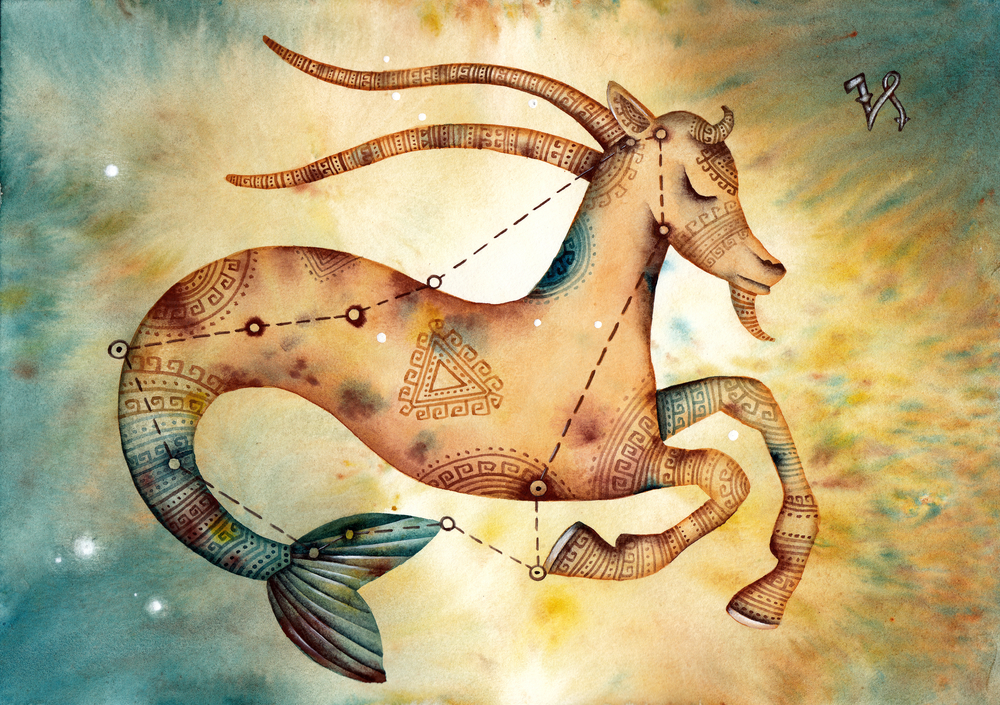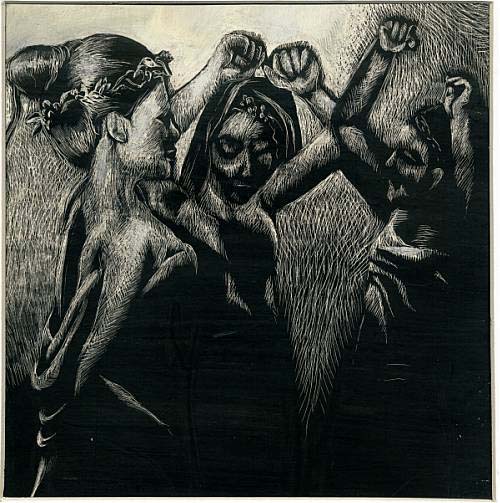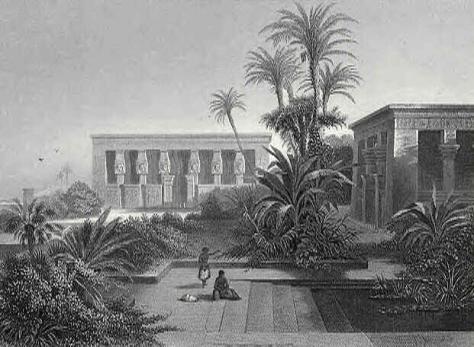
Date of Rulership: 21st December-19th JanuaryNegative, female; Quality: Cardinal; Ruling planet: Saturn; Element: Earth; Body part: Knees, Joints, Bones; Colour: Black, dark grey, and brown; Gemstone: Turquoise, Amethyst; Metal: Lead.
Following on from Sagittarius, Capricorn is a sign that is immensely focused on how developments made in various disciplines like science, economy, law, and psychology can be used to improve living standards, raise collective consciousness, and foster a powerful society that runs as quickly and efficiently as a Japanese bullet train or a Swiss Rado watch. The Goat possesses the memory of a Tibetan monk, or rather an Indian elephant and its intuition extends far, far back before the conscious will crawled its way out of the primordial sludge. Interestingly, everything about this primitive state of chaos unsettles and scares the Goat. In fact lack of structure and organization, whether on a personal level or a collective level, induces psychological complexes within the Capricornian psyche that may drive it over the edge. In light of this, one can begin to understand this star sign’s compulsion and obsession with developing systems that tabulate and organise information into coherent hierarchies, raising and enforcing social standards and laws, and encouraging individuals to turn their passions and interests into full-time careers. According to the Goat, compartmentalization is a must; how will contemporary society function effectively, grow, and prosper without specialists to put forth broad-based models and inspired leaders to assess their levels of practicality and decide whether or not they should be implemented. Capricorns are innately good at taking on the comprehensive responsibilities of such collective ventures for they are naturally born leaders and committed ones at that.
People born under the stars of this constellation are usually of an intellectual adroitness beyond their actual years. A personalized form of the Capricornian formative energy might be a three year to four year-old toddler with a very high IQ. Have you ever watched one in action in a kindergarten playground? These little mischievous angels are masters of manipulation. They loiter about sizing other kids up, figuring out what makes them tick, and subsequently flicking on the mental switches that will elicit complete acceptance, veneration, respect, and affinity on their part. Moreover, they also love the power that comes with positions of elevated status and authority and will always pick roles where they are able to order everyone around and be the centre of attention. The wisdom and insight pervading these little beings carry is extraordinary; they learn and identify what behaviours are encouraged and rewarded by parents, teachers, and other adults and will cunningly adopt them for the sake of obtaining what they want. Mature Capricorns very much like mischievous children with very high IQs. They are creatures of atypical restraint and a calculated, cautious temperament that can use their charm, wit and infective cheerfulness to ascend the wrungs of the social ladder and miraculously leave the people they mingled with to get there feeling cherished and esteemed. This talent serves them especially well in professional endeavours whereby expertise, skill level, and personality provide the requisite ammunition in catapulting an employee to the top of the pecking order. The Goat wants to please and to be pleased; a mutually satisfying situation it hopes will assist in its plans to achieve widescale success.
If we were to attach a Jungian archetype to this star sign it would definitely be The Perfectionist. Mediocrity, poor performance, procrastination, and indolence are non-existent in the Capricornian language and dictionary. The Goat expects much of others and even more of itself, a characteristic which sometimes proves beneficial and sometimes detrimental. It gravitates towards and gels well with those who are equally ambitious, driven, conscientious, and tunnel-visioned but can intimidate meeker and more submissive character types that lack focus, aspirations, and long-term goals. Generating a vision that will contribute something valuable to the society in which it lives and slowly lighting the hermetic fires that will bring it to fruition is big on its lifelong list of things-to-do. Lamentably, a motivated Capricorn can become so fixated on achieving success in all areas of his or her life–finance, love, and professional career–that he or she becomes merciless, indifferent, and as unyielding as a piece of sandalwood trapped between two giant boulders. Unlike a great many that capitulate to the ideals of political correctness, Capricorn is not afraid to employ disciplinary action against inferiors that persistently transgress.
Being a cardinal sign Capricorn is no stranger to activity, fast-paced rhythms, and spirited involvement. The Goat prefers to circumnavigate the world over and over and over until its limbs drop off rather than remain motionless and caged up in some suburban neighbourhood. It likes to be in constant motion physically, mentally, and intellectually; it wants to be creative and innovative in adding to its chosen field of inquiry but at the same time it yearns for recognition, honour and vindication as validation of these valuable contributions. Just as the sure-footed mountain goat can persevere in traversing precipitous terrain that other animals wouldn’t go anywhere near for fear of plunging to their deaths, so too does the Capricorn soul exude inner strength and resilience in the face of adversity. Unlike some of the other members of the zodiac which give up prematurely or won’t even try for fear of failure, Capricorn will keep chipping away at a foot of a megalithic problem until so much of it is underrun that it collapses in on itself. Of course there are times when the Goat’s unrelenting efforts don’t pay off and this can create psychological torture that leads to bitterness, depression, neurosis, and even psychosis if the condition remains unaddressed. An afflicted Goat can become so riddled by insecurities, self-doubts, and psychological hindrances that it will invert its own social nature and seek solace in escapist activities like daydreaming, reading romance fiction, playing computer games, and watching movies.
“What doesn’t hurt you will only make you stronger!” the resilient Capricorn shouts. “You must endure pain, suffering, and symbolic death during the course of your life in order to become the person you were meant to be. Life is all about improving the world in which we live and adding to it in a constructive manner. Hence there is no room for laziness, lawlessness, or immoralities. The world is our only home. What good would it be to us if it were an asymmetrical place of anarchy, confusion, and absurdity? Everybody needs to have a meaningful role in society that contributes to the harmonious functioning of the whole. Look at bees, for instance. Their society is a sort of autonomous monarchy comprised of drones, female workers, and the queen herself. All these little beings are intensely aware of their position and function in the hierarchy and adhere to it like the universe adheres to the laws of physics. They are all as assiduous as each other and we would do well to borrow and implement the same approach. Success in life comes through industry, focus, and hard yakka (hard work) folks; nothing more, nothing less.
Some people say that I resemble the winter solstice in that I’m sometimes cold and chilly, reserved, and rather impersonal in my dealings with others. This is not my true self, but rather an iron armour or shell which the contingencies of life have forced upon me. I’m a realist so I’d be the first to admit that the world can be a cruel and nasty place. Even though most wouldn’t admit to such, self-interest happens to be a primary urge amongst human beings and their tireless search for validation usually entails a confrontation with the less flattering attributes of the collective temperament. Hence it’s important to put up psychic defences that will guard your soft, squishy, and sensitive interior at all times. The human soul, my friends, is an abyss of human sentiments, and mine is no different. I will sing, dance, cry, laugh, and share intimate details of my life with individuals who manage to gain my love and complete trust, namely those that are going places and doing exciting things with themselves. As you know, I’m a sucker for security, attention, and status and the best way to get it is to be around those VIPs best able to open doors and facilitate it. I’m not an elitist in any way, but relationships built on synthetically constructed dependencies are an outgrowth of the Western culture in which we are born and raised. We need to work with that rather than against it for the sake of acquiring what we want!”
Capricorn the Goat is connected to two symbols that link the constellation with the reascention of the sun from its seasonal slumber. The first of these is a terrestrial goat or goat-fish crossbreed that has its iconographical origins in the ancient civilization of Mesopotamia. This is depicted morphologically as a sea monster; sometimes as a hybrid goat-fish with the four limbs of a goat and a fish tail and at other times as a sea goat with the posterior of a serpent. Most early cultures perceived that their collective histories were woven into the heavenly constellations and the Sumerians were no different. Foremost of the symbols belonging to the Sumerian god Enki were a goat and a fish, both of which had amalgamated into the astrological totem we recognise today by the second millennium bce. Originally, Capricorn probably descried an early matriarchal situation of the Middle East in which the earliest monolithic structures of Babylon rose vertically out of a semi-arid breadth of shallow lagoons, reed banks, mud flats, and marshes. The horns of the goat were celestial markers for Mesopotamia’s two principle cities, Babylon and Nineveh; the first was built along the river Euphrates and the second along the Tigris, respectively.
Constructed during the Ptolemaic Period (323-30bce) of Egypt’s illustrious history, the circular and rectangular zodiacs in the Temple of Hathor at Denderah bequeath to us the ancient zodiacal pictograms for the twelve signs. A fleeting glace will show that the vast majority of these have remained largely unchanged. With respect to the Capricorn constellation, the zodiacal band on the circular Denderah zodiac shows the figure of a goat with two legs adjoined to the rear end and tail of a fish. Though the signs and figures of the sky represented on these chronometers express a markedly Chaldean and Hellenistic influence, we can be sure that the autochthonous Egyptians explicitly understood the celestial zone and functional image of the sign as a marker of astronomical rebirth and solar reascent because demotic representations show an ankh, the symbol of life, and an aquatic tadpole with its hindquarters on solid ground (the inverse of the sea-goat image). Hence the Egyptians may have been aware of the twelvefold division of the zodiacal band way before Babylonian cosmogony merged with that of their own under a Hellenistic patina.
The Greeks themselves, who borrowed leisurely from Chaldean astrology, forged an association with their god Pan and with Zeus’s foster mother Amalthea. According to a cycle of Hellenistic myths that chronicle the Titanomachy, a ten-year war between the fearsome Titans and the renowned Olympians, the horned goat-god Pan fought the monster Typhon. In order to evade detection and escape unscathed, he dove into the tepid waters of the Nile. The section of the river into which Pan jumped encompassed magical properties and instigated a physiological transformation upon anything it came into contact with. Thus the parts that were submerged in water, namely his lower body and legs, morphed into a fish whilst his head and upper torso remained unchanged. On the other hand Amalthea was the she-goat that suckled the infant Zeus in a grotto of Mount Aigaion on the Mediterranean island of Crete. In order to save him from being cannibalised by his own father Cronus, Amalthea gathered the Kouretes, the armed and crested dancers of the earth, and prompted them to create an aural bedlam as to mask the cries of the infant.
The second symbol, an astrological shorthand used by astrologers in the casting of horoscopes, is a squiggle comprised of curves, a loop, and sometimes a straight line that could be interpreted as the goat’s horns. Looking at the variant forms of the Capricorn sigil, it is easy to see how the zodiacal imagery was appropriated to create a much simpler and rudimentary illustration recalling the Capricorn’s dualistic nature and primary ambition. With half of its being in the watery chaos of other worlds and dimensions and the other half trotting on three-dimensional and material notions of solid ground, Capricorn wishes to find a balance between the ethereal and material and the sigil no doubt demonstrates this. There are many sayings associated with Capricorn, the best known being that time itself would end when its cluster of stars huddled above the horizon. This sentiment probably has its origins in the fact that the sun transits this section of the zodiacal band at a time when the formative forces of Mother Nature are at the weakest, as well as in the perception that Saturn, the deity intimately connected with cosmic law and the mediation of time, was exalted in this sign.
In the northern hemisphere the constellation of Capricorn appears in the night sky at the time when the solar orb has descended to the nethermost regions of its celestial journey, also known as the winter solstice. Many cultures of the world such as those of the Far East have interpreted this time as the astronomical resurrection of the annual cycle, and therefore a marker for the New Year. This was usually a just and prosperous period which might be equated with a Golden Age when the earth gave back to its mortal children abundance by sending down the rains and offering up a good harvest. It’s probably no surprise that the ruler of this sign, Saturn or the Greek Cronus, holds a sheaf of corn in one hand and a sickle in the other. Together these symbols denote an earned condition of fecundity, justice, and strength which so often comes when one is patient, diligent and perseveres in their chosen field of physical or intellectual inquiry. Taking into consideration the time of the year in which the sun traverses its domain, its earthly, cardinal nature along with its planetary ruler, it would not be unjustified to claim that the Capricorn psyche is honourable, self-disciplined, ambitious, and grounded with partial participation in mystical and speculative philosophy. Just as the astrological pictogram suggests, Capricorn is a very versatile sign once it has completely evolved and can switch from a worldly and ambitious extroversion to a spiritual and contemplative introversion in the manner that nymphs, the larvae of dragonflies, will desert their aquatic environment and transition to an avian mode of existence upon reaching adulthood. Consequently Capricorn’s formative energies reconcile the conscious and sure-footed will with its intuitive and psychic origins, the somnolent unconscious.









